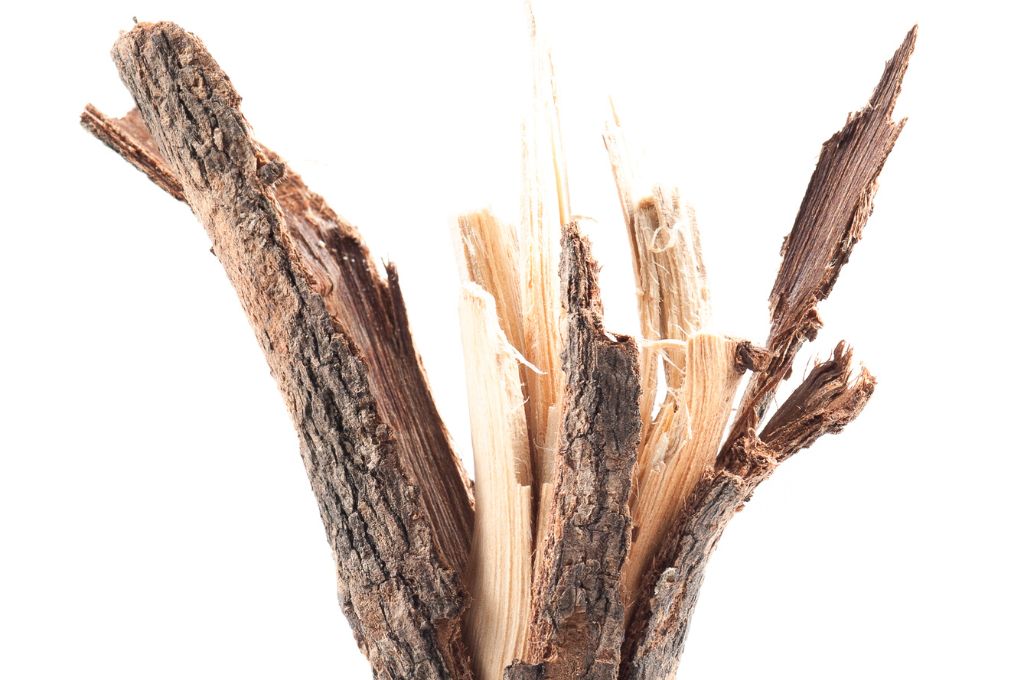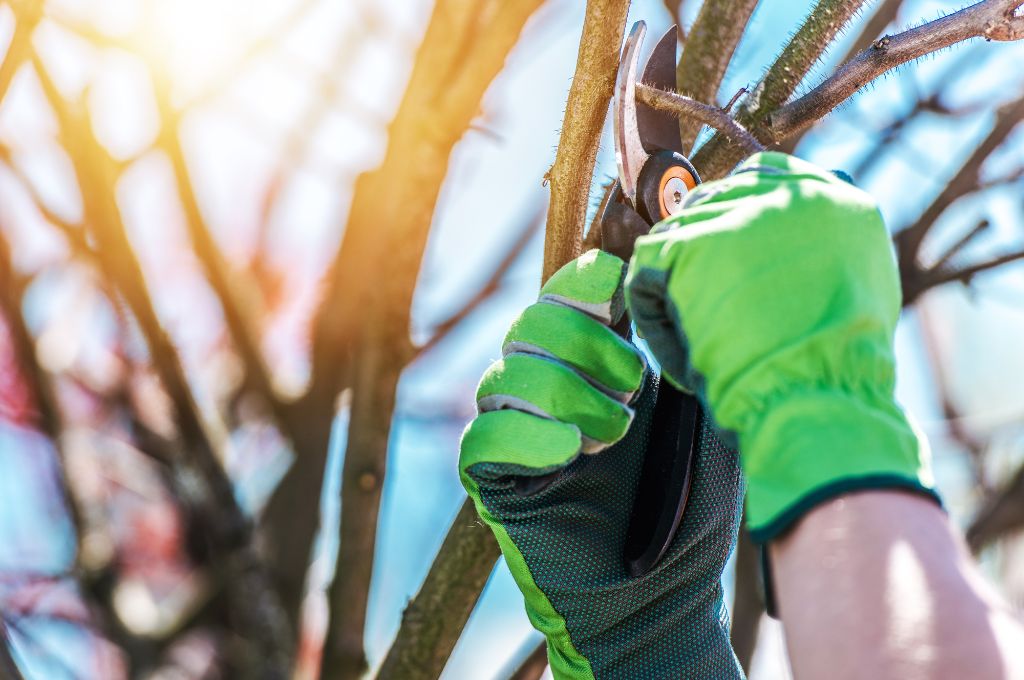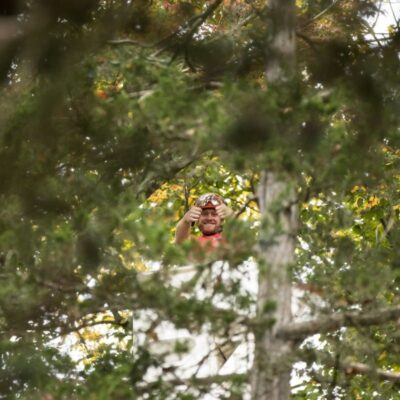For deciduous trees, the trees that drop their leaves each fall, it can be difficult to discern if a branch or the entire tree is dead during the winter months or if the branch or tree is just dormant.
Luckily, there are several ways to tell, which we will go over in this article.
Keep reading to learn how to tell the difference so that you will know if your tree needs pruning, if it needs to be removed, or if it is just resting for the winter.

The missing bark on this tree is a sign that the tree may be decaying.
What is Dormancy?
Dormancy is any time a tree slows down its metabolism and stops producing leaves. Deciduous trees are dormant from the time their leaves drop in fall until new buds appear in spring. Trees may also enter dormancy in drought conditions or if they are under extreme stress.
Trees enter dormancy during the colder months to protect themselves from the cold weather and the decreased availability of water. This can be referred to as cold hardiness.
During these periods of reduced activity, a tree may appear dead.
Note: there are two forms of dormancy, endo-dormancy (where the tree won’t grow in any conditions) and eco-dormancy (where the tree could grow, but the conditions aren’t yet right). You can learn more about these two forms of dormancy in this article from Michigan State University.
Why do trees go dormant?
Dormancy is a time of rest for trees. They use a lot of energy in spring to produce buds and leaves, and energy is also expended for the tree to grow. The dormant period allows trees to conserve this energy, protect themselves from cold weather, and prepare for spring.
During the dormant period, it is an ideal time to prune most trees. There are many reasons for this, including the fact that most pests and diseases won’t spread.

The inside of a dead tree branch will be brown or gray rather than green.
How can you tell if a tree is dead or just dormant?
The easiest way to tell if a tree is dead or dormant is to check for signs of life:
- Live branches will bend before they break, whereas dead branches will snap easily.
- Live branches will have green in the inner layers, while dead branches will be dry and brown or gray.
- Dead trees often show signs of decay such as mushrooms around the base of the tree, peeling bark, or missing sections of the tree’s trunk.
- Depending on the type of tree, if there are a lot of fallen branches, the tree might be in trouble.
If you’re concerned that your tree (or a section of the tree) may have died, simply take a pocketknife or other small knife (or even your fingernail) and scratch off a small section of the outer layer of bark on a few select branches. Just a tiny scratch should reveal if the layer underneath is green or not.
You may also want to perform a “snap test”: try to break (snap) a few small branches that are on the tree. If they break easily, they are dead. If they have some flexibility to them, they are still alive.
When spring arrives, a healthy tree will start to produce buds that will turn into flowers or leaves. In early spring, you can check for these buds. When they appear will depend on the type of tree.
What if you still can’t tell or a section of your tree is hard to reach?
If you are unsure if your tree or a section of your tree is dead, please call American Climbers for a professional tree assessment.
At American Climbers, we have the skills, knowledge, and equipment to reach even the highest sections of your trees and will be able to inform you if your tree is dead or just dormant.
What should you do if any part of your tree is dead?
If a section of your tree is dead, it should be removed before it falls on its own. Dead branches are likely to fall in high winds, from heavy snow loads, or during intense storms. Hiring a professional such as American Climbers to remove the dead branches can prevent damage from the branch falling on its own.
If the entire tree is dead, contact American Climbers to schedule a tree removal. Dead trees should be removed as soon as possible.
Contact American Climbers for your Dormant Tree Care Needs
American Climbers is available for tree work year-round, so if you have a tree that needs to be removed or pruned, contact us to schedule an appointment. We can also provide tree assessments, clean up after storms (including winter storms), and grind tree stumps.
Blog Topics
Recent Posts
What's Happening? Stay Informed!
Stay on top of local events, pest and disease updates, tree and landscape tips, and more. Delivered straight to your inbox each month.









